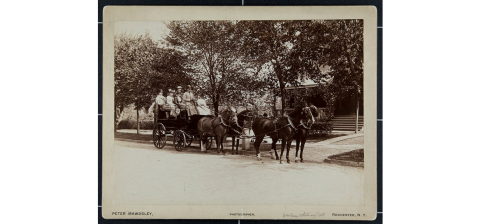
Photographers
Peter Mawdsley
1824 — 1909
Peter Mawdsley invented the first photographic paper, the silver gelatin print, in 1873. It was the first photographic process that submerged exposed paper into chemicals, rather than using light, as the chief agent in developing an image. Due to its stability and ease of use, developing-out paper became the photographic process of choice and dominated the twentieth century in terms of amateur and professional black-and-white photographic prints.
Developing-out papers are extremely light sensitive and must be handled in either total darkness or under dim light of a specific wavelength. The paper is made of potassium bromide and silver nitrate which is combined with a binder, gelatin, to form an emulsion. That emulsion is used to coat a fiber- or resin-coated paper base. Gelatin silver prints replaced albumen prints as the most popular photographic process by 1885.
Mawdsley did not have much commercial success with these papers, and although he created the process in 1873, Sir Joseph Swan, an early developer of successful incandescent lights used to illuminate homes and public buildings, patented the process in 1879. The papers were commercially available from 1885 onward.
Last Updated on: 2024-06-22
